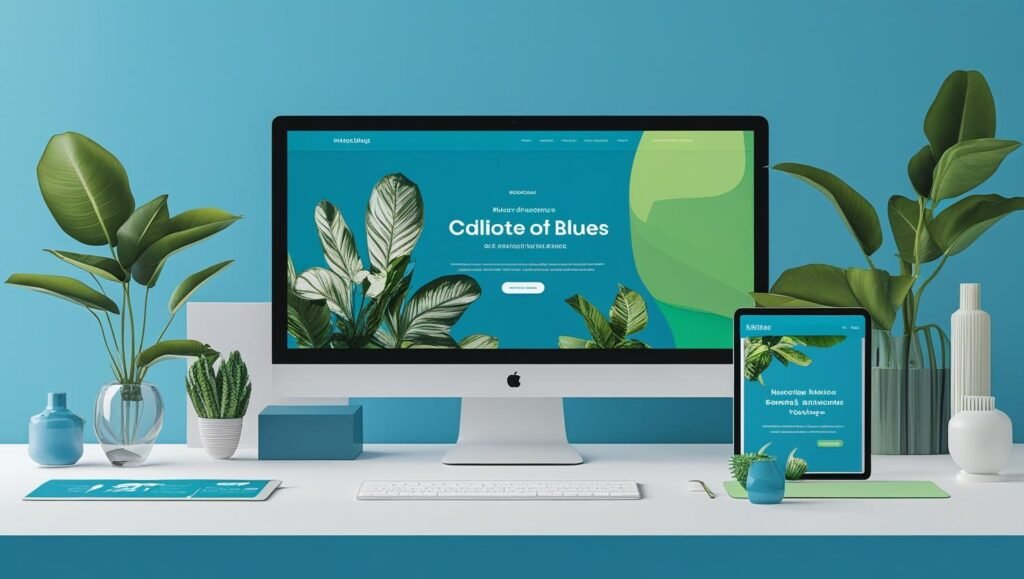
Loading Speed vs Visual Appeal
Loading speed vs. visual appeal – every web designer faces this dilemma. Your client wants a visually stunning website with high-resolution images, smooth animations, and interactive elements that wow visitors. But they also want it to load instantly and rank well in Google. These goals often seem to pull in opposite directions, creating tension between what looks amazing and what performs well.
The good news? This doesn’t have to be an either-or decision. With the right approach, you can create websites that are both visually appealing and lightning-fast. Let me show you how to solve this age-old web design challenge.
Why This Dilemma Exists
The conflict between speed and visual appeal stems from how websites actually work. Beautiful design elements – high-resolution images, custom fonts, animations, and interactive features – all require additional resources to download and process. The more visual elements you add, the more your website has to work to display them.
Meanwhile, users expect websites to load in under three seconds, and search engines like Google factor loading speed into their ranking algorithms. Every second of delay can cost you visitors, conversions, and search engine visibility.
This creates a frustrating situation where the elements that make websites look professional and engaging are the same ones that can hurt performance. But understanding this relationship is the first step to finding solutions that work.
The Real Cost of Slow Loading
Before we dive into solutions, let’s be clear about what’s at stake. Loading speed isn’t just a technical metric – it directly impacts your bottom line. Studies consistently show that even small delays in loading time can dramatically affect user behavior.
A one-second delay can reduce conversions by 7%. A three-second delay can increase bounce rates by over 30%. And if your site takes longer than five seconds to load, you’ll lose more than half your visitors before they even see your content.
For e-commerce sites, the numbers are even more stark. Amazon found that every 100-millisecond delay in loading time cost them 1% in sales. When you’re talking about millions of dollars in revenue, those milliseconds add up quickly.
But it’s not just about immediate user behavior. Google uses loading speed as a ranking factor, meaning slow sites get buried in search results. You could have the most beautiful website in the world, but if people can’t find it or leave before it loads, it won’t drive business results.
The Visual Appeal Imperative
On the flip side, visual appeal isn’t just vanity – it’s essential for building trust and credibility. Users form opinions about websites within milliseconds of seeing them, and these first impressions are heavily influenced by visual design.
Professional, attractive design signals that your business is established, trustworthy, and pays attention to details. Poor visual design can make people question whether your business is legitimate or capable of delivering quality services.
Visual elements also serve functional purposes. Well-designed layouts guide users’ attention to important information, images help explain complex concepts, and interactive elements can make websites more engaging and memorable.
The challenge is getting these benefits without sacrificing the performance that makes everything else possible.
Smart Image Optimisation Strategies
Images are often the biggest culprits when it comes to slow loading times, but they’re also crucial for visual appeal. The solution isn’t to eliminate images – it’s to optimise them intelligently.
Choose the right format for each image. Use JPEG for photographs, PNG for graphics with transparency, and WebP when browser support allows. WebP can reduce file sizes by 25-35% compared to JPEG while maintaining the same visual quality.
Implement responsive images that serve different sizes based on the user’s device. There’s no reason to send a 2000-pixel-wide image to someone viewing your site on a 400-pixel phone screen. Modern browsers support responsive image techniques that automatically serve the most appropriate size.
Use lazy loading to defer loading images until they’re actually needed. This means your page can start rendering immediately, and images below the fold load as users scroll down. It’s a win-win that improves initial load times without sacrificing visual content.
Compress without compromising quality. Tools like TinyPNG or ImageOptim can reduce file sizes by 60-80% while maintaining visual quality that’s indistinguishable to most users.
Strategic Font and Typography Choices
Custom fonts can make your website look unique and professional, but they can also slow things down significantly. Each font file that needs to be downloaded adds to your loading time.
Limit your font families to two or three maximum. Every additional font family requires another download, and the performance impact adds up quickly. You can create plenty of visual variety using different weights and styles of the same font family.
Use font display strategies that prevent invisible text during font loading. The CSS font-display: swap property ensures text remains visible while custom fonts load, preventing the jarring experience of invisible text that suddenly appears.
Consider system fonts for body text. System fonts load instantly because they’re already on the user’s device. You can still use custom fonts for headlines and branding elements while keeping body text fast and readable.
Animation and Interactive Elements
Animations and interactive features can make websites feel modern and engaging, but they need to be implemented thoughtfully to avoid performance issues.
Use CSS animations over JavaScript whenever possible. CSS animations are handled by the browser’s graphics processor, making them smoother and less resource-intensive than JavaScript-based animations.
Keep animations subtle and purposeful. A gentle fade-in or smooth transition enhances the user experience. Complex, bouncing animations that serve no functional purpose just slow things down while distracting from your content.
Optimize for mobile performance. What runs smoothly on a desktop computer might struggle on a mobile device with limited processing power. Test your animations on actual mobile devices to ensure they enhance rather than hinder the mobile experience.
Technical Performance Wins
Beyond optimizing individual elements, there are technical strategies that can dramatically improve loading speed without sacrificing visual appeal.
Implement effective caching so returning visitors don’t have to download the same resources repeatedly. This makes your site feel incredibly fast for repeat visitors while maintaining full visual fidelity.
Use a content delivery network (CDN) to serve your files from servers geographically close to your users. This can cut loading times in half for visitors who are far from your hosting server.
Minimize and compress your code. Remove unnecessary spaces, comments, and code from your CSS and JavaScript files. Enable gzip compression on your server to reduce file transfer sizes by up to 70%.
Prioritize above-the-fold content by loading critical CSS and JavaScript first, then loading less important elements in the background. This creates the perception of instant loading while still delivering full functionality.
The Smart Compromise Strategy
The key to solving the speed versus appeal dilemma is strategic prioritization. Not every element on your website needs to be a visual masterpiece, and not every feature needs to load instantly.
Identify your most important visual elements – usually your logo, hero image, and primary call-to-action – and optimize these for both speed and impact. These elements deserve the most attention because they shape first impressions.
Use progressive enhancement by starting with a fast, functional base and adding visual enhancements that load quickly. This ensures your site works well even if some decorative elements take a moment to appear.
Test real-world performance using tools like Google PageSpeed Insights, but more importantly, test on actual devices with typical internet connections. Lab tests don’t always reflect real user experiences.
Making the Right Trade-offs
Sometimes you’ll still need to make hard choices between visual appeal and loading speed. When this happens, consider your audience and business goals.
For e-commerce sites, loading speed usually wins because it directly impacts sales. For creative agencies or photographers, visual appeal might be worth a slight performance trade-off. The key is making these decisions consciously rather than accidentally.
Your Action Plan
Start by auditing your current website’s performance using tools like GTmetrix or Google PageSpeed Insights. Identify the biggest performance bottlenecks – usually images, fonts, or JavaScript files.
Then work through optimizations systematically, testing performance after each change. You’ll often find that small optimizations can deliver big performance improvements without any visible quality loss.
Remember, the goal isn’t to create the fastest website possible or the most beautiful website possible – it’s to create the most effective website possible. That means finding the sweet spot where visual appeal supports your business goals without sacrificing the performance that makes everything else work.
The speed versus visual appeal dilemma isn’t really a dilemma at all. With smart optimization strategies and thoughtful design choices, you can have both. Your users will get the fast, smooth experience they expect, and you’ll get the professional, engaging design that drives business results.

